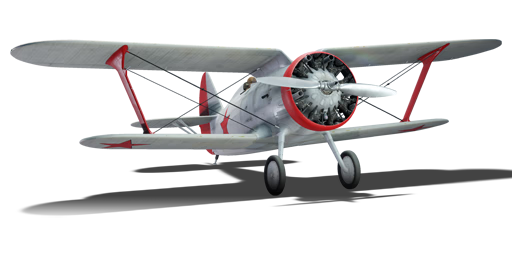

Aviation
I-15 M-25
I
Rank
AB
1.0
RB
1.0
SB
1.0
Battle rating
USSR
Research country
Fighter
Main role
Free
Research
Free
Purchase
General information
The I-15 M-25 is a Soviet fighter. It has been in the game since the start of the Open Beta Test prior to Update 1.27.
The I-15 M-25 is a single-engine fighter developed from the OKB Polikarpov I-15 (TsKB-3) for a 1935 release. Attempt to introduction the Soviet license modification of the Wright Cyclone SGR-1820 engine under the designation M-25 was progressing very slowly, therefore most of the production I-15 aircraft at this time were outfitted with the 9-cylinder Gnome et Rhône air-cooled M-22 engines (the licensed version of the British Bristol Jupiter VI) which had a nominal power of only 480 hp.
This version of the I-15 in game can be determined superior to the I-15 M-22, as it features a much more powerful engine.
Camouflages
Flight performance
Max speed
at 3,000 m
368345379356 km/h
Rate of Climb
13.410.517.210.5 m/s
Turn time
88.77.68.4 s
Max altitude
9,200 m
Takeoff Run
125 m
Landing
flaps
flaps
Take-off
flaps
flaps
Combat
flaps
flaps
Air
brake
brake
Gear
control
control
General characteristics
Crew
1 person
Engine
Length
6.1 m
Wingspan
9.8 m
Wing Loading
60 kg/m²
Weight:
Base weight
1.191.221.161.22 t
Fuel in main tanks
0.23 t (1h 13m)
Limits:
Max Speed Limit (IAS)
560 km/h
Mach Number Limit
0.75 M
G limit
≈ -4/10 G
Flap Speed Limit (IAS)
320 km/h
Offensive armament
4 × 7.62 mm PV-1 machine gun
Ammunition
3,200 rounds
Fire rate
750 shots/min
One-second Burst Mass
0.12 kg
| Belt | Belt filling | Armor penetration (mm) at a distance: | |||||
|---|---|---|---|---|---|---|---|
| 10 m | 100 m | 500 m | 1000 m | 1500 m | 2000 m | ||
| T/Ball/AP-I/AI/AI/AI | 13 | 12 | 7 | 3 | 2 | 0 | |
| T/AP-I/AI/AI/API-T | 13 | 12 | 7 | 3 | 2 | 0 | |
| API-T | 9 | 8 | 6 | 3 | 0 | 0 | |
| AP-I/AP-I/AP-I/AI/AI | 13 | 12 | 7 | 3 | 2 | 0 | |
Suspended armament
Setup 1
2 × 50 kg FAB-50sv (forged) bomb
Economy
Repair cost
AB
free
RB
free
SB
free
Crew training
free
Experts
1,000 

Aces
10 

Research Aces
80,000 

Reward multiplier
AB / RB / SB
10 / 10 / 50 % 

100 % 

Total cost of modifications
3,550 

159 

Talisman cost
190 

Research order:
Flight performance | |
|---|---|
Survivability |
|---|
Weaponry |
|---|
Rating by players
You must play more than 3 battles for the last week and more than 10 battles in a vehicle to rate it.
Like:
25
Flight performance:
Not enough ratings
Survivability:
Not enough ratings
Aerial combat:
Not enough ratings
Ground attack:
Not enough ratings
Balance:
Not enough ratings
Tips & Tricks
This space is currently empty
Do you know any interesting vehicle features?
Loading...
No articles about this vehicle yet
Become the first author and get rewards!
Write a guide, tell about interesting historical facts, make a tutorial or simply an interesting post.
No more content